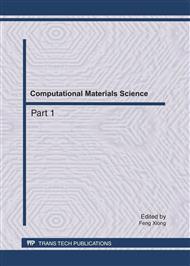p.886
p.892
p.898
p.904
p.908
p.913
p.919
p.924
p.930
H1 -Galerkin Expanded Mixed Finite Element Methods for Pseudo-Hyperbolicequations
Abstract:
H1-Galerkin mixed finite element method combining with expanded mixed element method are discussed for a class of second-order pseudo-hyperbolic equations. The methods possesses the advantage of mixed finite element while avoiding directly inverting the permeability tensor, which is important especially in a low permeability zone. Depended on the physical quantities of interest, the methods are discussed. The existence and uniqueness of numerical solutions of the scheme are derived and an optimal order error estimate for the methods is obtained.
Info:
Periodical:
Pages:
908-912
Citation:
Online since:
July 2011
Authors:
Price:
Сopyright:
© 2011 Trans Tech Publications Ltd. All Rights Reserved
Share:
Citation:


